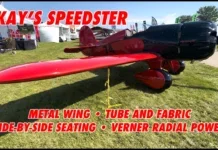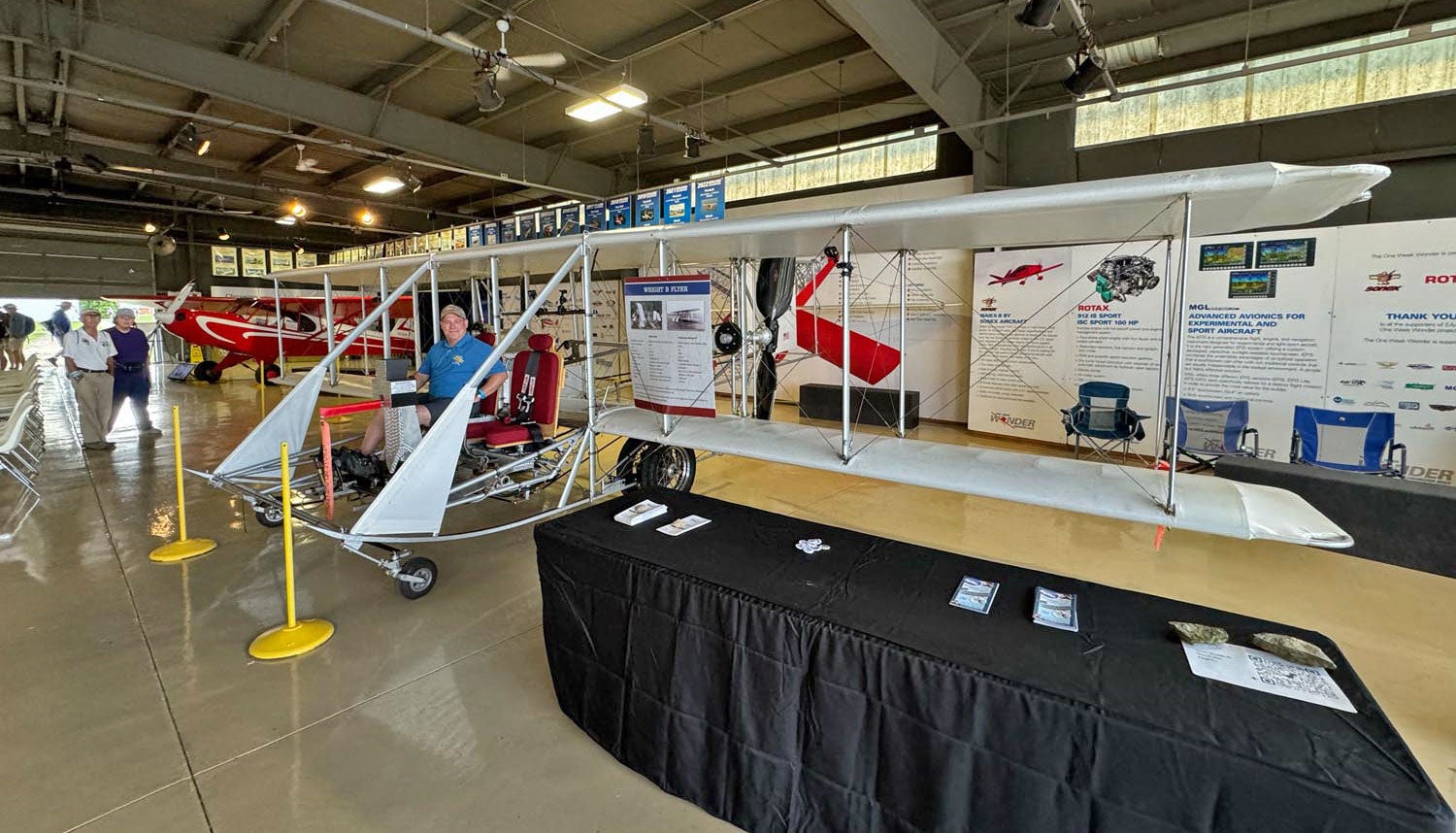
Imagine a Wright B Flyer with a Lycoming-Thunderbolt IO-390 engine, Dynon Skyview D-700, and ASDB that is Part 23-compliant. You don’t have to imagine. It is sitting in the Homebuilder’s Hangar this week (until Sunday morning) at AirVenture. It is worth a visit!
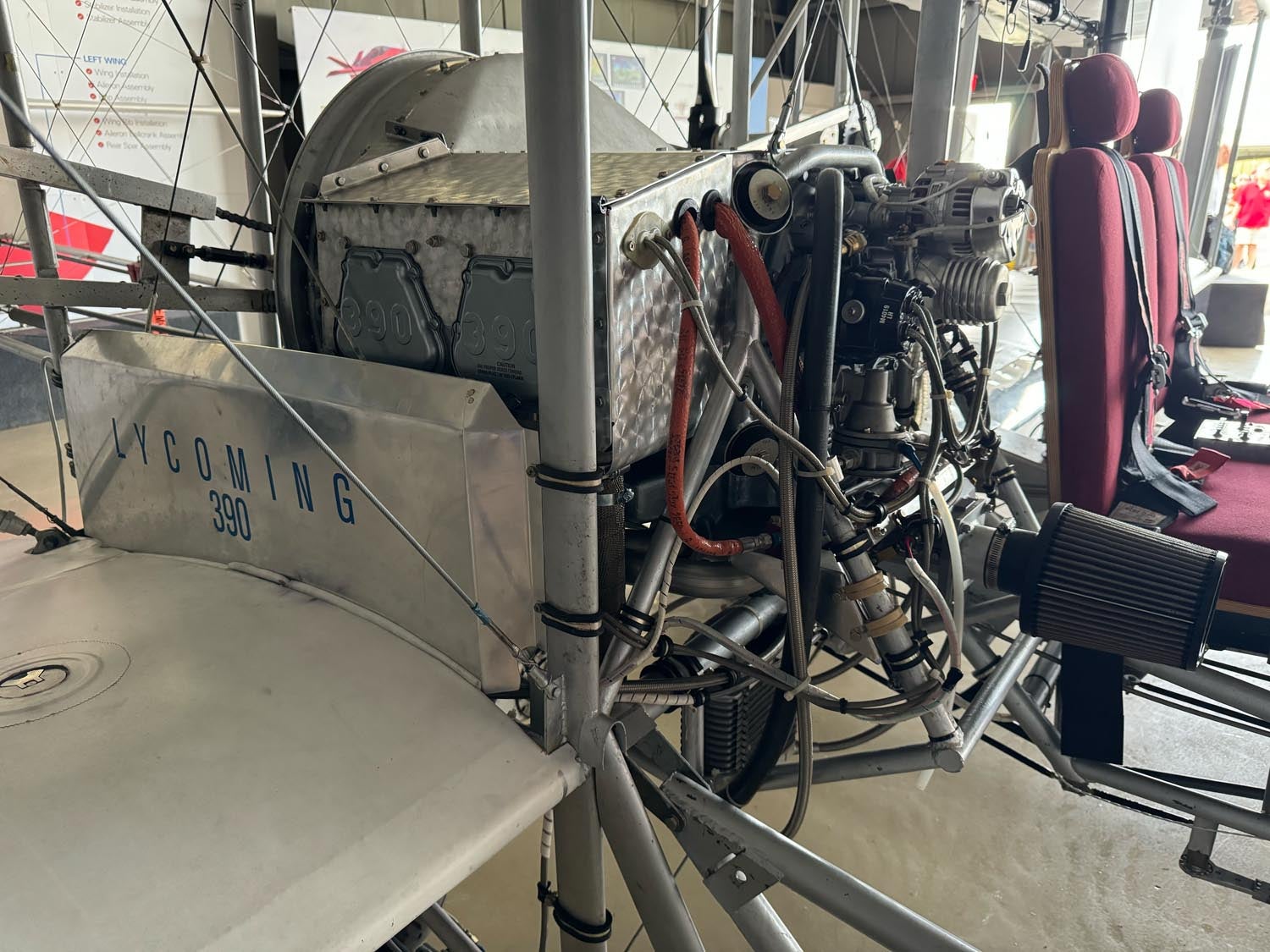
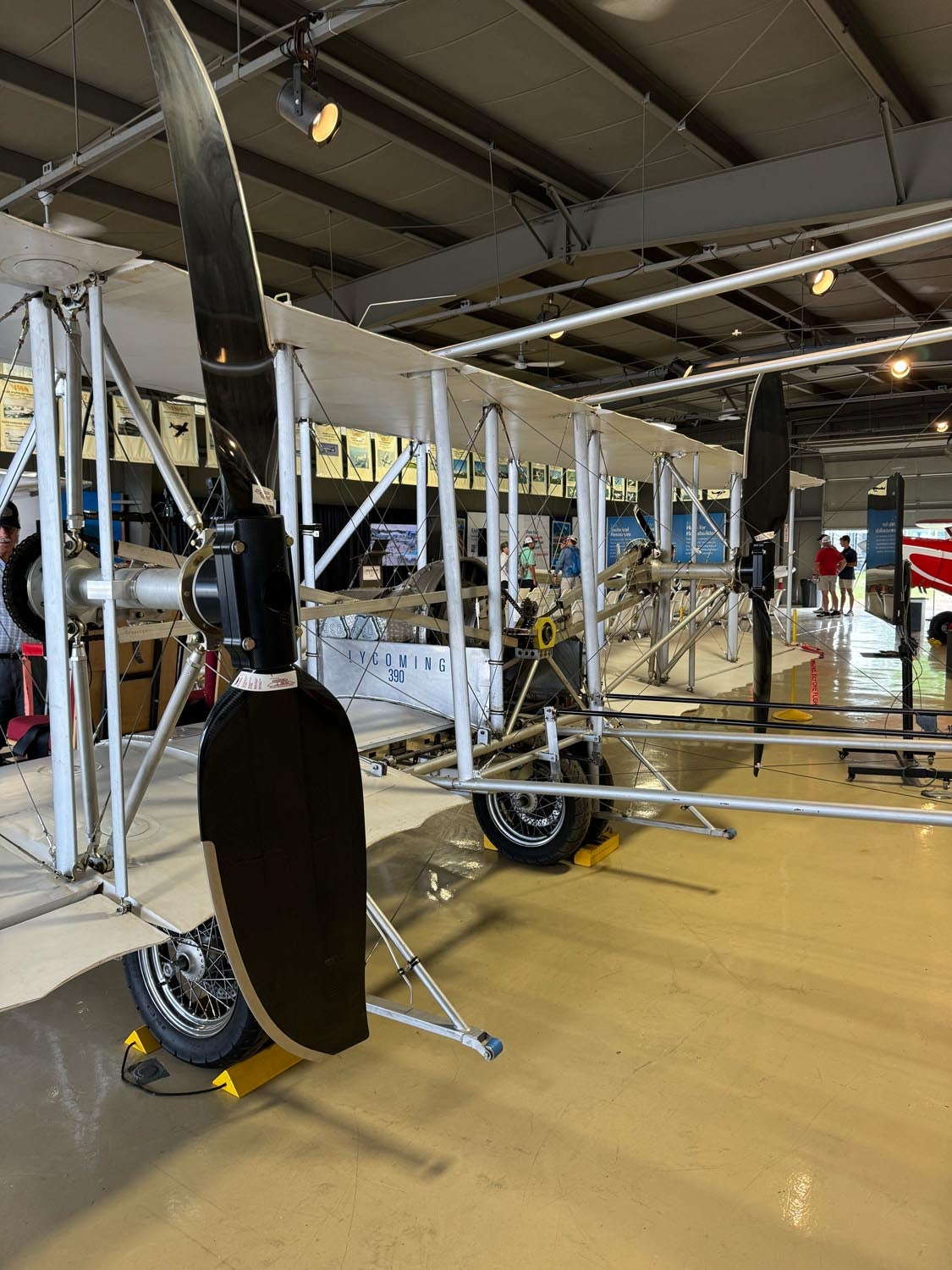
The builders are members of the Wright B Flyer group in Dayton, Ohio. The group already owned and flew another Wright B Flyer, the Brown Bird, that was built in 1982 and it was getting a bit “long in the tooth.” So, in 2015, they started a requirements process. First, and most important, they wanted a plane that complied with Part 23, maintain 150% margins on strength and loads, and would be safe enough to warrant an exemption from the FAA to allow paid passenger flights. Their second criteria was to make it look as close to the Wright B Flyer as possible without compromising the first criteria. These largely conflicting objectives lead to interesting compromises and decisions. Ultimately, they hope that they have preserved the 1911 open-air experience for future passengers while making the flight as safe as possible.
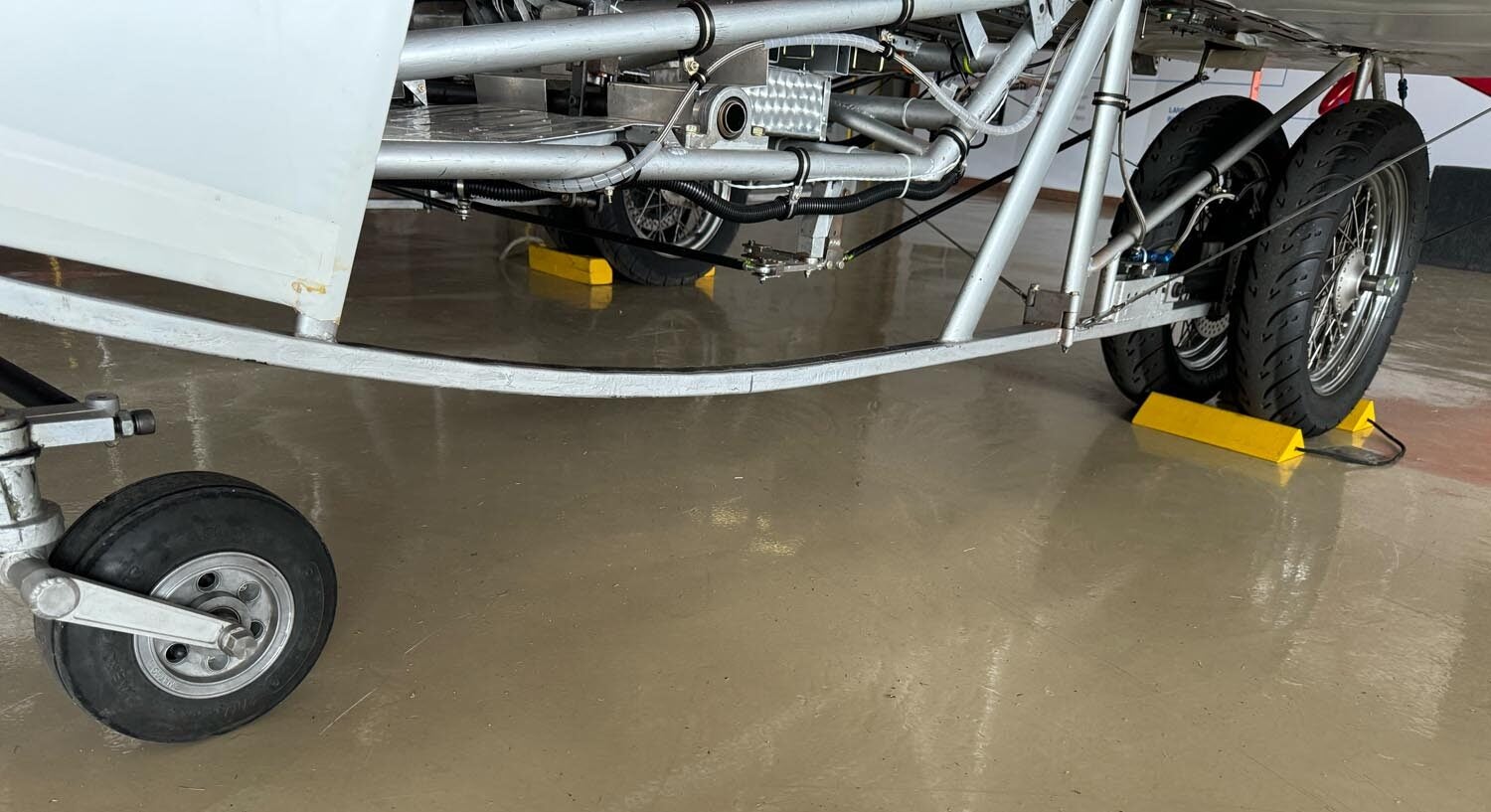
The wing ribs are wood (spruce) but the covering is modern Oratex fabric. The chains used to drive the two propellers were manufactured by Diamond Chain in southern Indiana. My guide to the plane, Jeff Stands, tells me that this family-owned company made the original Wright B Flyer chains. (He also noted that the company had recently been purchased and moved to the Chicago area.) There is a little aluminum used in the flight deck but the frame is 4130 chrome-moly steel. Because the plane lacks a fuselage, steel is used in the major structure but that also makes the airplane heavy. Its total empty weight is 2900 pounds.
Flight characteristics include:
- Take-off speed: 50 kt
- Stall speed: 48 kt
- Climb speed: 52-53 kt
- Cruise speed: 54-55 kt
- Redline: 65 kt
- Ceiling: ~5000’ (on a very cold day in March 2023)
The group will be giving a presentation on the plane at the Vintage Hangar Forum on Thursday at 11 am. They plan to talk about the building process, flight testing, and changes they found were needed based on the testing. It will certainly be interesting.





